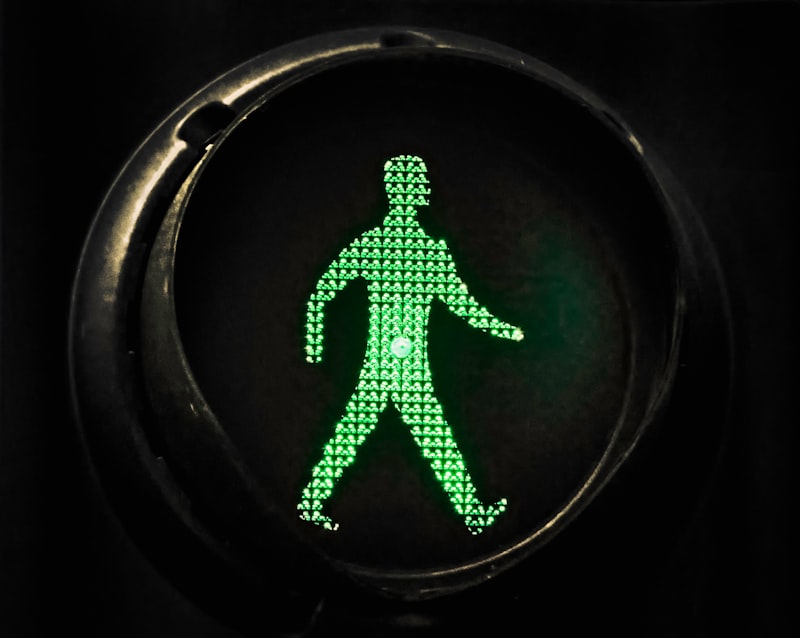"A well-handled product recall can transform a crisis into an opportunity for brand enhancement."
Life as a product marketer can be as unpredictable as a rollercoaster ride, and every now and then, you may find yourself in a situation that can feel like a free-fall: a product recall. When this happens, your marketing skills will be put to the ultimate test. How you navigate this crisis can make or break your brand's reputation. Let's dive into the sea of uncertainty together, and chart a course that can help you turn the tide.
The Gravity of a Product Recall
A product recall is like a ticking time bomb. It's not a question of if it will explode, but when. According to the Consumer Product Safety Commission, there were over 300 product recalls in the U.S. in 2021 alone. That's almost one recall per day! If you think this could never happen to your brand, think again. It's a universal challenge that transcends industries and markets.
Preparing for the Inevitable
Product recalls are often unexpected, but that doesn't mean you can't be prepared. It's like carrying an umbrella on a sunny day. You might not need it, but if a storm suddenly hits, you'll be glad you have it. Here are some steps you can take:
Form a Crisis Management Team: This is your A-team that will take the lead when a crisis hits. It should include members from various departments such as product management, public relations, legal, and of course, marketing.
Develop a Recall Plan: Create a detailed, step-by-step plan that outlines what to do in case of a product recall. This should include everything from identifying the problem, to notifying customers and regulators, to managing the recall process.
Train and Test: Regularly train your team on the recall plan and run simulations to identify any potential issues. This will ensure that everyone knows what to do when a recall happens.
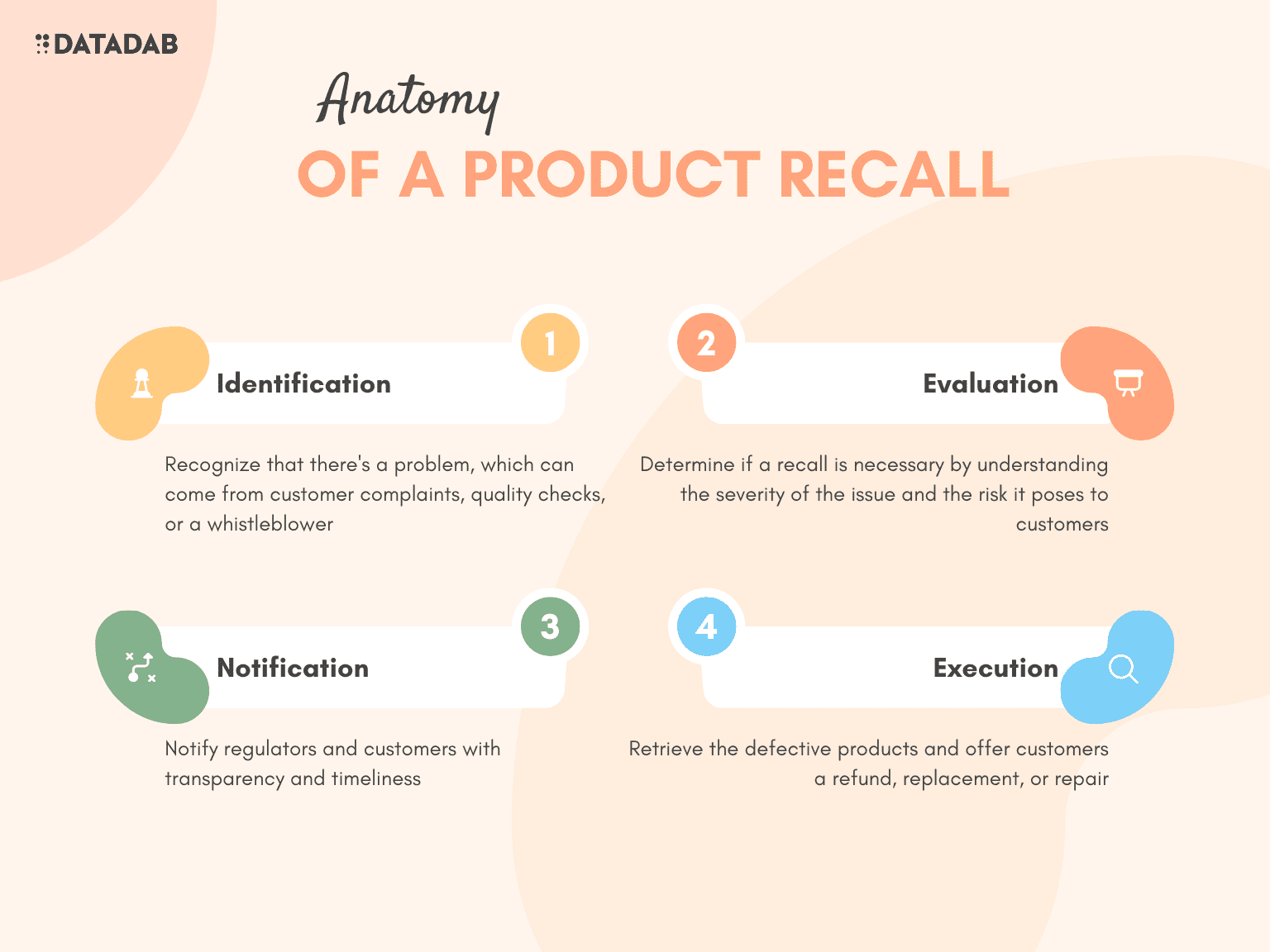
The Anatomy of a Recall
Once a recall is initiated, it's like a complex dance where every step counts. Here's a typical sequence of events:
Identification: The first step is identifying that there's a problem. This can come from customer complaints, quality checks, or even a whistleblower.
Evaluation: Once a potential issue is identified, it needs to be evaluated to determine if a recall is necessary. This involves understanding the severity of the issue and the risk it poses to customers.
Notification: If a recall is deemed necessary, regulators and customers need to be notified. This is where transparency and timeliness come into play.
Execution: Finally, the recall process is executed, which involves retrieving the defective products and offering customers a refund, replacement, or repair.
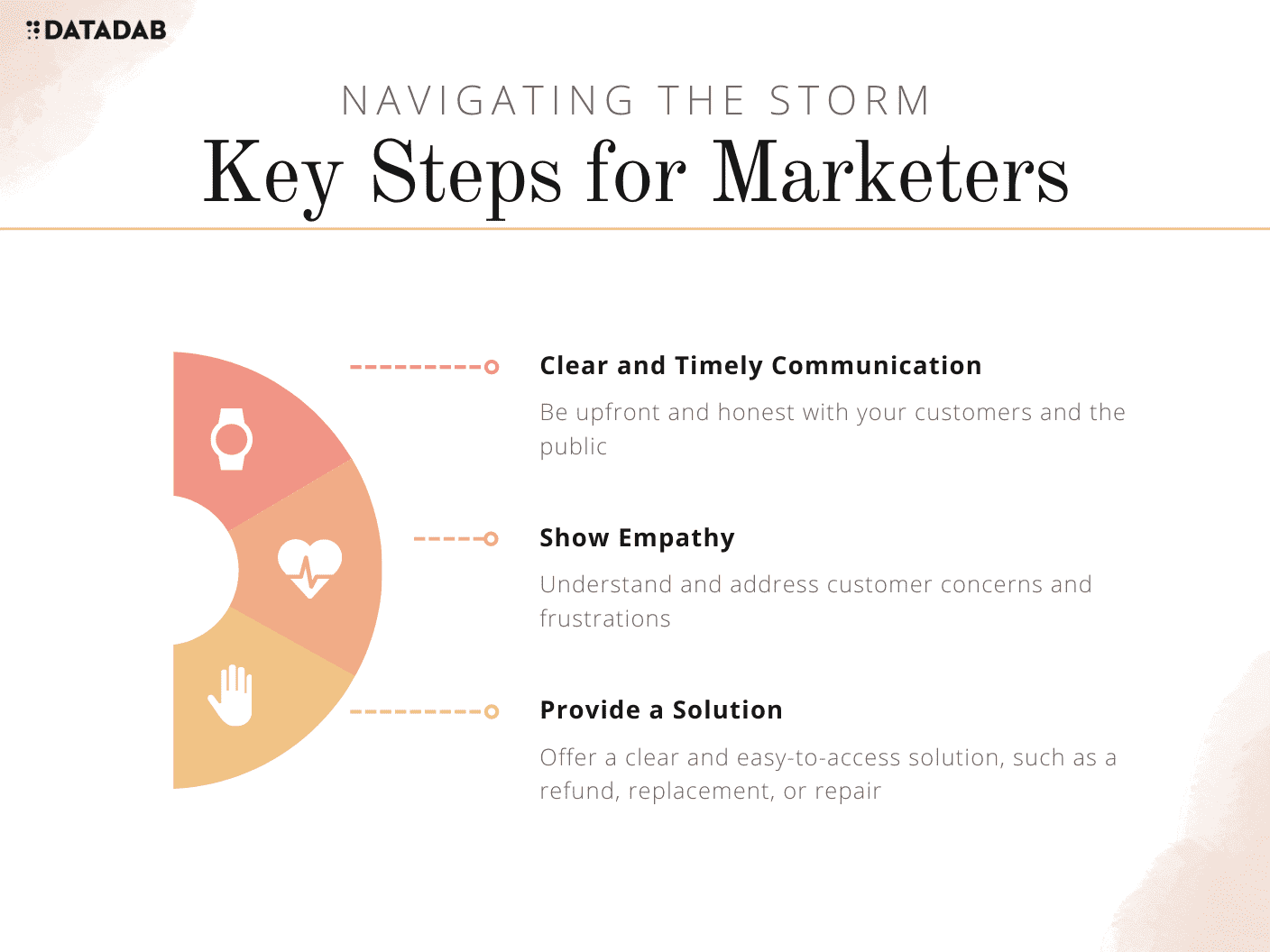
Navigating the Storm
Once a recall is underway, your role as a marketer is crucial. You're the ship's captain in a storm, and how you steer will determine whether you sink or swim. Here's how you can navigate:
Communicate Clearly and Timely: Clear and timely communication is key. Don't try to hide the issue or downplay its severity. Be upfront and honest with your customers and the public.
Be Empathetic: Show empathy towards your customers. Understand their concerns and frustrations and address them head-on. Remember, they trusted your brand and now feel let down.
Provide a Solution: Offer a clear solution to your customers. Whether it's a refund, replacement, or repair, make sure it's easy for them to access.
Case Study: Samsung's Galaxy Note 7 Recall
Remember the saga of the Galaxy Note 7? Samsung's flagship phone was recalled not once, but twice, after several of its units spontaneously combusted due to a manufacturing defect in their batteries. Samsung first announced an informal recall on 2nd September 2016, followed by a formal recall on 15th September 2016. The initial strategy was to replace the faulty phones with new ones that used batteries from a different supplier. However, when these replacements also started catching fire, Samsung was forced to recall the Galaxy Note 7 worldwide on 10th October 2016, ultimately deciding to cease the production of the device permanently a day later. As part of their damage control, Samsung took several steps, like distributing multi-layer fireproof boxes with packing instructions and issuing software updates to disable the phones' functionality. They also planned to recycle reusable components from the recalled models and release refurbished models where applicable.
The recall took a massive toll on Samsung's business. Their operating profits for the third quarter of 2016 were projected to be down by 33% compared to the previous quarter, and Credit Suisse analysts estimated that Samsung would lose at least US$17 billion in revenue from the production and recall of the Galaxy Note 7.
Despite these staggering figures, Samsung managed to weather the storm. They handled the crisis with transparency, regularly updating customers about the situation and providing clear instructions on how to return the faulty phones. Their swift and decisive action, coupled with their sincere apology, helped to mitigate the damage to their brand reputation.
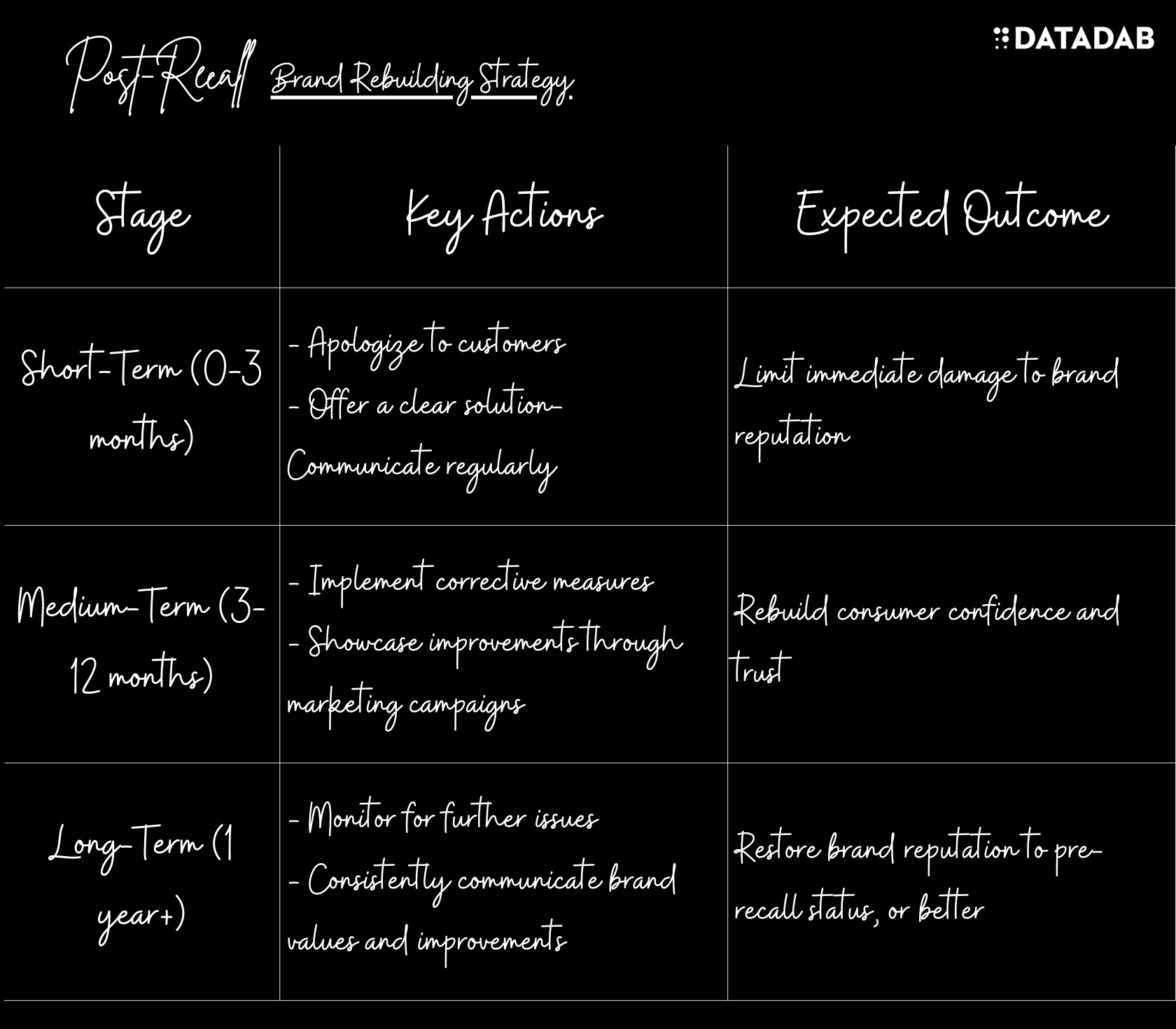
Lessons from the Trenches
Recalls are a marketer's nightmare, but they also offer valuable lessons. Here are some key takeaways from Samsung's experience:
Be Transparent: Samsung was open about the issue from the beginning, which helped to build trust with customers and regulators.
Act Swiftly: Swift action can limit the damage. Samsung acted quickly to recall the faulty phones and cease their production.
Communicate Regularly: Regular communication keeps customers in the loop and reassures them that you're doing everything you can to resolve the issue.
Offer a Clear Solution: Samsung provided clear instructions on how to return the faulty phones and offered refunds, replacements, or repairs.
Apologize Sincerely: An apology goes a long way in rebuilding trust. Samsung's sincere apology helped to soothe customer frustrations and rebuild their trust in the brand.
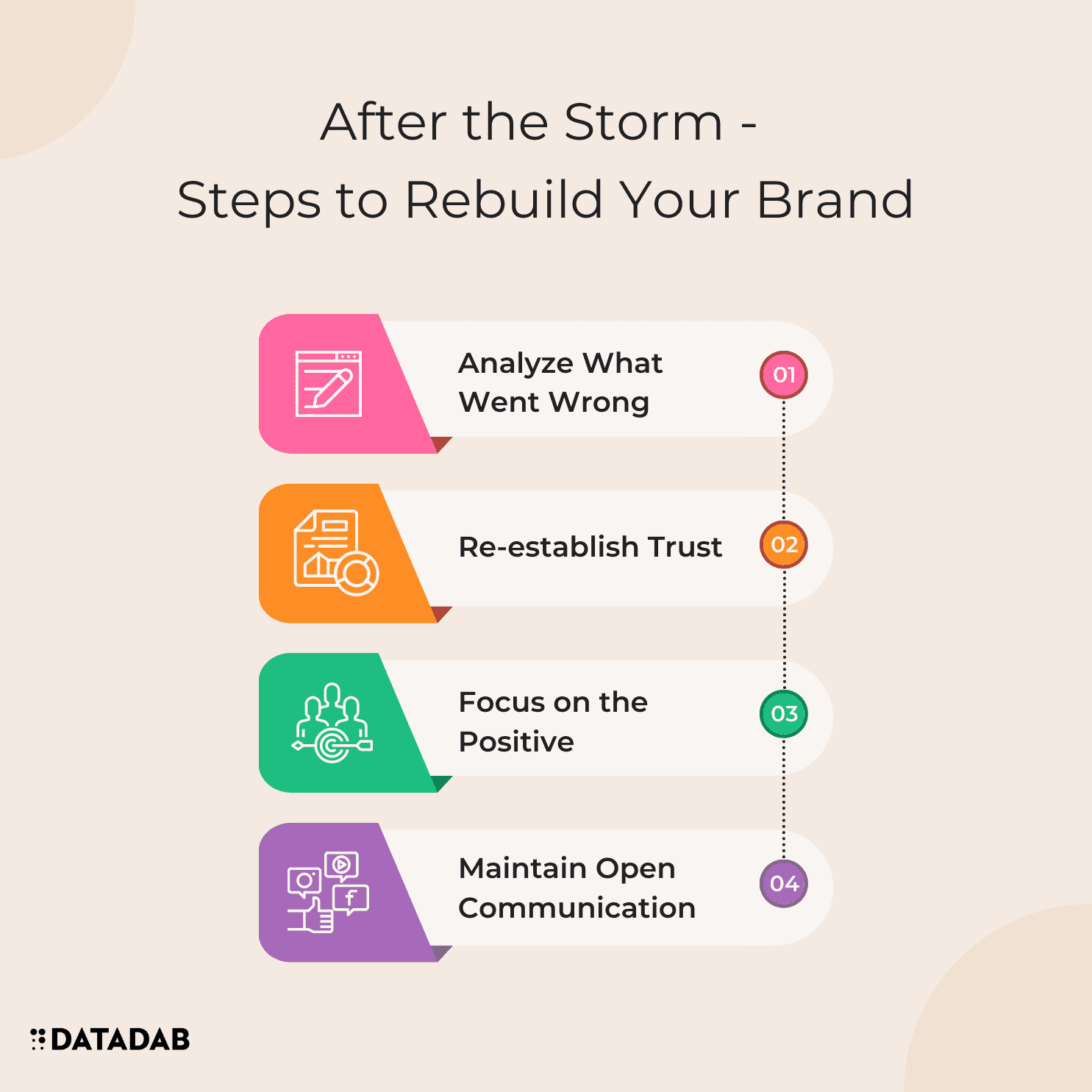
After the Storm: Rebuilding Your Brand
Once the recall is over and the dust has settled, it's time to rebuild. Your brand may be bruised, but it's not broken. Here are some steps you can take to restore your brand's reputation:
Analyze What Went Wrong: Understanding what led to the recall can help prevent a similar issue in the future. Conduct a thorough analysis to identify the root cause and implement measures to fix it.
Re-establish Trust: Trust is the foundation of any brand, and it's likely been shaken. Re-establish it by showing your customers that you've learned from the experience and have taken steps to ensure it doesn't happen again.
Focus on the Positive: Highlight the positive aspects of your brand and your products. Remind customers why they fell in love with your brand in the first place.
Maintain Open Communication: Keep the lines of communication open with your customers. Show them that you value their feedback and are committed to meeting their needs.
Conclusion
Navigating a product recall is no easy task, but with the right strategy and approach, it can be managed effectively. The key is to be prepared, act swiftly, communicate clearly, and put your customers first. By doing so, you can weather any storm and come out stronger on the other side.
Remember, a product recall isn't the end of the world. It's a test of your brand's resilience and a chance to show your customers that you value their safety and satisfaction above all else. Yes, there will be bumps along the way, and yes, your brand may take a hit. But with transparency, empathy, and a commitment to making things right, you can turn a crisis into an opportunity to strengthen your brand's reputation and deepen your relationship with your customers.
So, to all the product marketers out there, remember this: A product recall doesn't define your brand. How you handle it does. Be prepared, be transparent, be empathetic, and above all, be there for your customers. You've got this.
FAQ
Q1: Why is it essential to have a product recall plan?
A1: A product recall plan is a roadmap that guides your company's response when a product defect is identified that could harm customers or significantly damage your brand reputation. This plan outlines the steps your company will take, who is responsible for each step, and how you'll communicate with customers and regulators. Having a plan in place helps ensure a swift, organized, and effective response, minimizing harm to customers and damage to your brand.
Q2: Who should be part of the crisis management team?
A2: The crisis management team should include representatives from various departments within your company, including:
- Product: To understand the technical details of the product issue
- Marketing: To manage customer communications and protect the brand
- Legal: To ensure compliance with laws and regulations
- Sales: To manage relationships with retailers and distributors
- Customer Service: To handle customer inquiries and complaints
- Operations: To manage the logistics of the recall
Each member plays a crucial role in ensuring the recall process runs smoothly and effectively.
Q3: How can we identify a potential product issue early?
A3: Early identification of a product issue is key to managing a recall effectively. Some strategies for early identification include:
- Customer feedback: Monitor customer complaints and reviews closely. These are often the first signs of a potential problem.
- Quality checks: Regular testing and quality checks during production can help identify issues before the product reaches customers.
- Supplier audits: Regular audits of your suppliers can help ensure they're meeting quality standards.
Q4: What factors should we consider when deciding whether to initiate a recall?
A4: The decision to initiate a recall should be based on the severity of the product issue and the risk it poses to customers. Factors to consider include:
- Health and safety risks: If the product defect could cause harm or injury to customers, a recall is likely necessary.
- Regulatory standards: If the product fails to meet regulatory standards, a recall may be required.
- Brand reputation: If the defect could significantly damage your brand reputation, you may choose to initiate a recall.
Q5: How should we communicate with customers during a recall?
A5: Transparency, timeliness, and empathy are key when communicating with customers during a recall. Here are some guidelines:
- Transparency: Be open about the nature of the problem, the risk to customers, and what you're doing to fix it.
- Timeliness: Communicate early and often. Update customers regularly on the progress of the recall.
- Empathy: Show understanding and concern for the inconvenience or worry the recall may cause customers.
Q6: What are some common mistakes companies make during a recall?
A6: Some common mistakes include:
- Delaying the recall: This can make the problem worse and damage your brand reputation.
- Downplaying the issue: This can erode trust and make customers feel like you're not taking their safety seriously.
- Poor communication: Failure to communicate effectively with customers can lead to confusion and frustration.
Q7: What can we learn from the Samsung Galaxy Note 7 recall?
A7: The Samsung Galaxy Note 7 recall teaches us the importance of transparency, swift action, regular communication, and a clear solution. Despite the significant financial impact, Samsung managed to retain customer loyalty through their handling of the recall【8†source】【9†source】.
Q8: How can we rebuild our brand after a recall?
A8: Rebuilding your brand after a recall
takes time and a dedicated effort. Here are some steps you can take:
- Apologize: A sincere apology can go a long way in rebuilding trust with customers.
- Analyze: Conduct a thorough analysis to identify the root cause of the problem and implement measures to prevent a similar issue in the future.
- Communicate: Keep your customers in the loop about the steps you're taking to fix the issue and improve your processes.
- Re-engage: Once you've addressed the issue, focus on re-engaging customers with positive messages about your brand.
Q9: How can we prevent a product recall from happening in the first place?
A9: While it's impossible to guarantee that a product recall will never happen, there are several steps you can take to minimize the risk:
- Quality Control: Implement strict quality control processes during production.
- Supplier Vetting: Thoroughly vet your suppliers to ensure they meet your quality standards.
- Testing: Regularly test your products for safety and performance.
- Feedback Loop: Create a robust system for collecting and analyzing customer feedback, which can often reveal issues before they become widespread.
Q10: How should we handle international recalls?
A10: International recalls can be complex due to varying laws and regulations in different countries. Here are some general guidelines:
- Understand Local Regulations: Each country has its own regulations regarding product recalls. Understand and comply with these regulations in each market where your product is sold.
- Communicate in Local Languages: Ensure your recall notices are translated accurately and appropriately into the local language of each market.
- Work with Local Authorities: In many cases, you'll need to work with local authorities to conduct a recall. This can include regulatory bodies, consumer protection agencies, and possibly law enforcement.
- Logistics: Consider the logistics of retrieving defective products and providing refunds or replacements in each market.
Remember, these are general guidelines. You should always consult with legal counsel and recall experts when handling an international recall.





